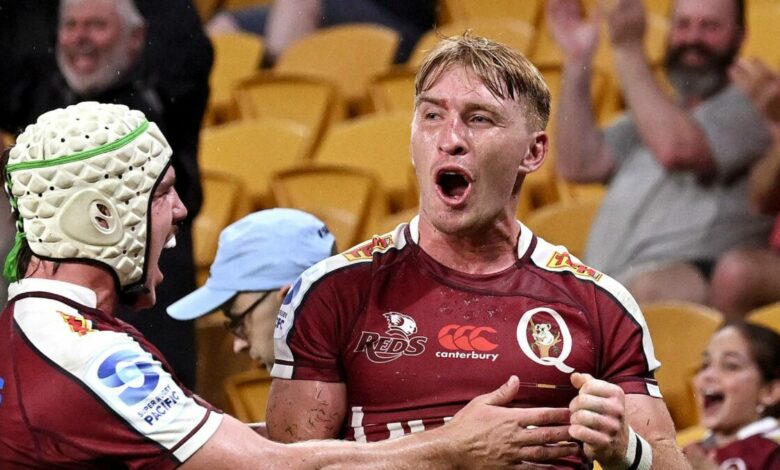
A
set small text size
A
set default text size
A
Set large text size
The solution to fixing professional rugby in Australia is a competition that ensures an Australian team wins every week, and a strong focus on touring.
Australia’s regular proposals to resolve the crisis generally follow the NRL and AFL club competition models, although this provides for a greater oversight in the two departments. The player pool will struggle to expand beyond the four teams we have in Super Rugby today. Funding is not available overnight to create the infrastructure and local involvement needed to run a professional competition.
The Shute Shield and Hospital Cup competitions are renowned for their competitive nature and tribalism. This club model is not broken and so we should not try to fix it. The clubs have tradition and following yet lack the infrastructure to provide modern professionalism. Furthermore, creating similar products for these two codes strengthens the position of rugby union in Australia. No discrimination, no separate markets and further competition in weaker markets.
Rugby in Australia has a long-standing tradition of touring, dating back to the earliest recordings. In 1888, the British and Irish Lions toured Australia and New Zealand for the first time. The 35-match tour of the two countries included no tests, but played provincial, city and academic sides. The British and Irish Lions tour next year is a timely reminder that touring, tradition and values are what make rugby such an extraordinary and unique game.
Australia played its first Test in 1903 against New Zealand at the Sydney Cricket Ground in front of a crowd of 30,000. Between 1931 and 1981, the Bledisloe Cup was irregularly contested during rugby tours between the two countries. It was held annually from 1982 to 1995. Since 1996, the cup has been contested as part of the Rugby Championship with South Africa and New Zealand. In 2026, the All Blacks are set for an eight-match tour of South Africa, consisting of three Tests and five provincial matches.
2026 offers Australia an opportunity to reset the balance of its season calendar. Currently, Super Rugby Pacific limits the domestic season to February to June. The international window sees the Wallabies fixtures limited to July. The Rugby Championship provides the Wallabies with a total of six home fixtures each calendar year. It is time for Australia to move away from schedules, formats and competitions that no longer serve them.
The Wallabies generate the largest share of rugby revenue in Australia. Driving growth in the game means hosting more fixtures in an attractive series that captures the imagination of spectators. This will involve a ‘tour’ of New Zealand and Australia during agreed months of the season calendar, with a tour in March and April involving all domestic teams and culminating in a fixture near Anzac Day. The reverse tours will be used to close their respective seasons in September. Keeping the Test series to two matches would give six All Black fixtures in Australia and vice versa.
Generating revenue for our domestic teams means hosting more than the seven fixtures they are guaranteed each year in Super Rugby Pacific. The 2020 and 2021 Super Rugby AU seasons showed that there is an appetite for state-based competition at the expense of NZ-based teams. Maintaining the four existing teams is a cost-effective way of maintaining the provincial structure that differentiates rugby from the NRL and AFL. The calendar needs to be organized logically, in a way that suits its supporters and is a valuable entertainment product.
The proposal is to create a competition for the Waratahs, Reds, Brumbies and Force that encourages a tour-based series. To provide parity of fixtures in the current calendar, this would mean the Force would tour New South Wales playing a minimum of three fixtures.

Tate McDermott of the Reds. (Photo by Bradley Kanaris/Getty Images)
This would create an opportunity for the Waratahs to host games allowing fixtures to be played in Sydney, Newcastle and other areas to engage statewide audiences. Along with the home and away series, this will provide all four teams with nine home matches and eighteen matches in total.
After all series are completed the top two teams can compete in a Grand Final to complete the season. Name each series’ trophy after players who played for both teams, attracting new audiences and providing more rugby for television contracts.
While we continue to debate the future of Super Rugby and speculate on a national club competition, professionalism is waning due to a lack of fixtures and a lack of direction. Going backward may be the most practical solution in order to move forward.
(TagstoTranslate)Featured(T)Rugby Australia(T)Rugby union(T)Super Rugby(T)Super Rugby Pacific
